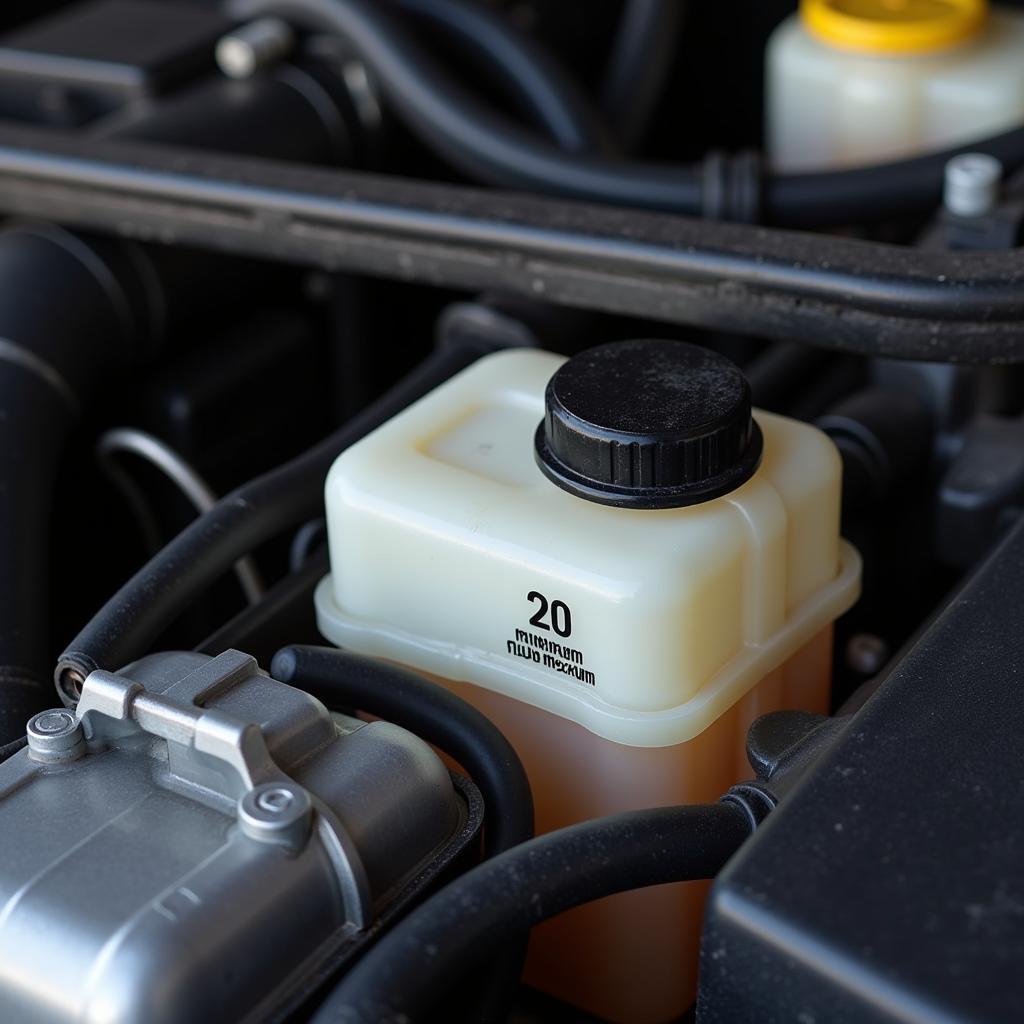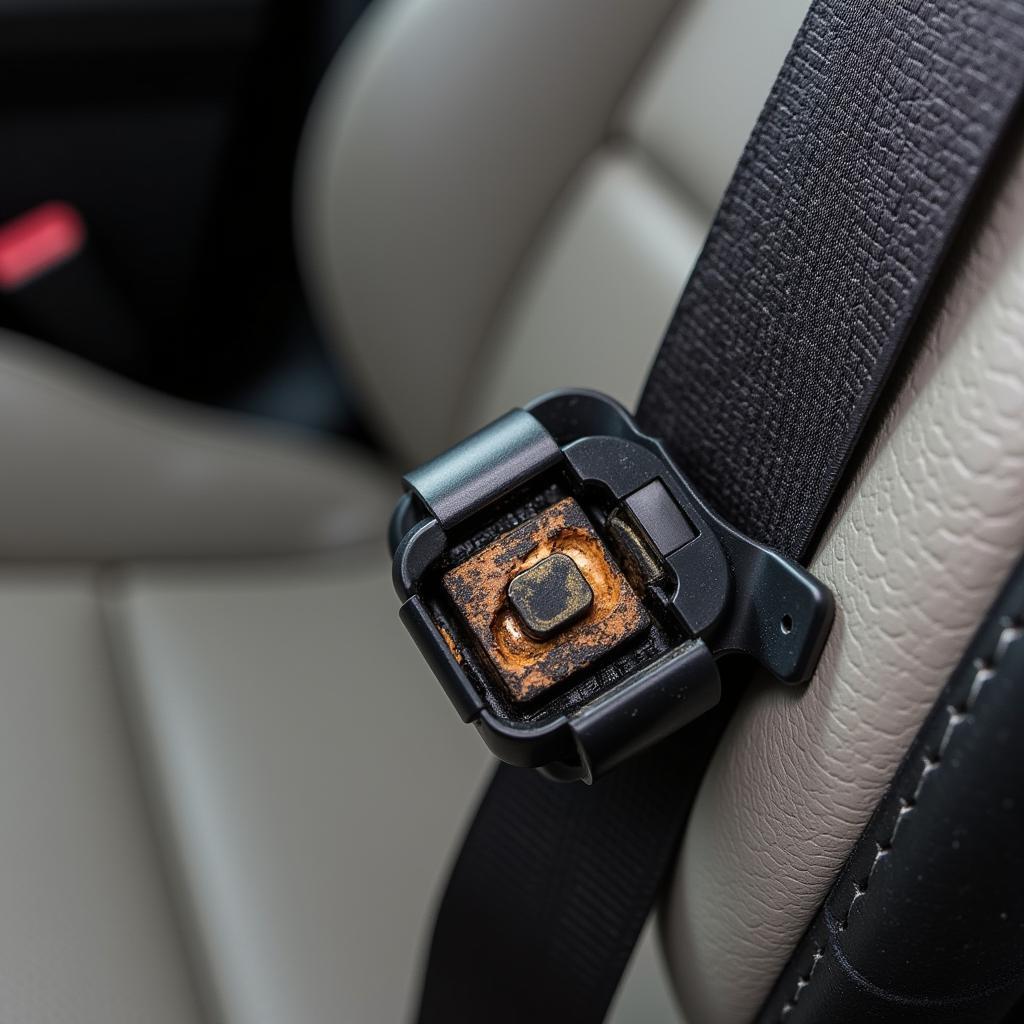The brake warning light on your dashboard is a crucial safety feature, and when it illuminates in your 2005 Subaru Forester, it’s essential to address the issue promptly. This light can signal a range of problems, from low brake fluid to more serious issues with your braking system. This article will guide you through the potential causes of a 2005 Subaru Forester brake warning light and provide insights into diagnosing and resolving the issue.
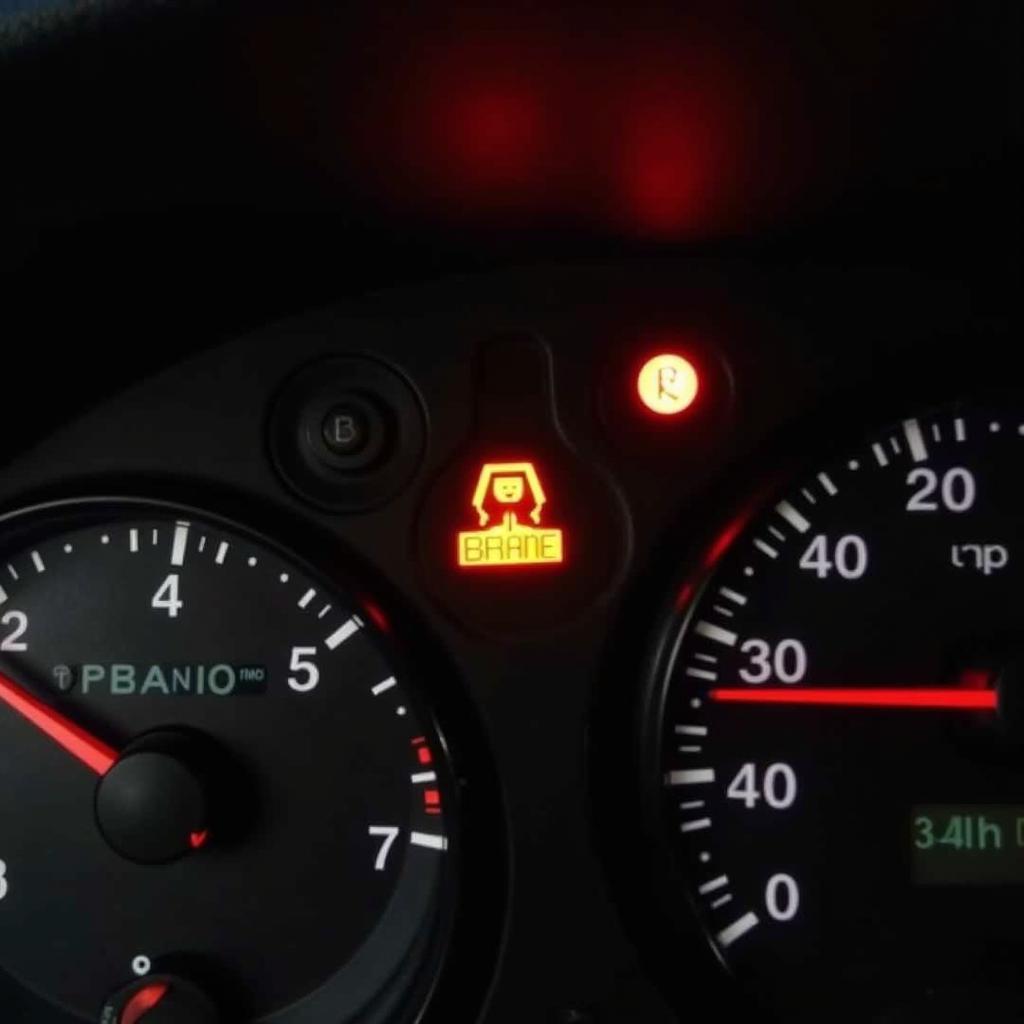 2005 Subaru Forester dashboard with illuminated brake warning light
2005 Subaru Forester dashboard with illuminated brake warning light
Understanding Your Subaru’s Brake Warning System
Before we delve into the specifics, it’s important to understand how your Subaru’s brake warning system works. The system is designed to alert you of two primary concerns:
-
Low Brake Fluid: Your Subaru Forester uses hydraulic pressure to engage the brakes. When the brake fluid level drops below a safe threshold, the warning light will illuminate, indicating a potential leak or worn-out brake pads.
-
Parking Brake Engaged: The warning light also serves as a reminder that your parking brake is engaged. While this is usually a simple fix, driving with the parking brake on can cause significant damage to your braking system.
Common Causes of a 2005 Subaru Forester Brake Warning Light
Here are the most common reasons why your 2005 Subaru Forester’s brake warning light might be on:
1. Low Brake Fluid
The most frequent culprit is low brake fluid. Over time, brake pads wear down, requiring more brake fluid to be displaced into the brake lines. If the fluid level drops too low, the warning light will activate.
Troubleshooting: Check your brake fluid reservoir. It’s located under the hood, on the driver’s side. If the fluid level is low, add the recommended DOT 3 or DOT 4 brake fluid.
Important Note: Simply adding brake fluid without addressing the underlying cause is not a solution. If you find yourself adding brake fluid frequently, you likely have a leak that requires immediate attention from a qualified mechanic.
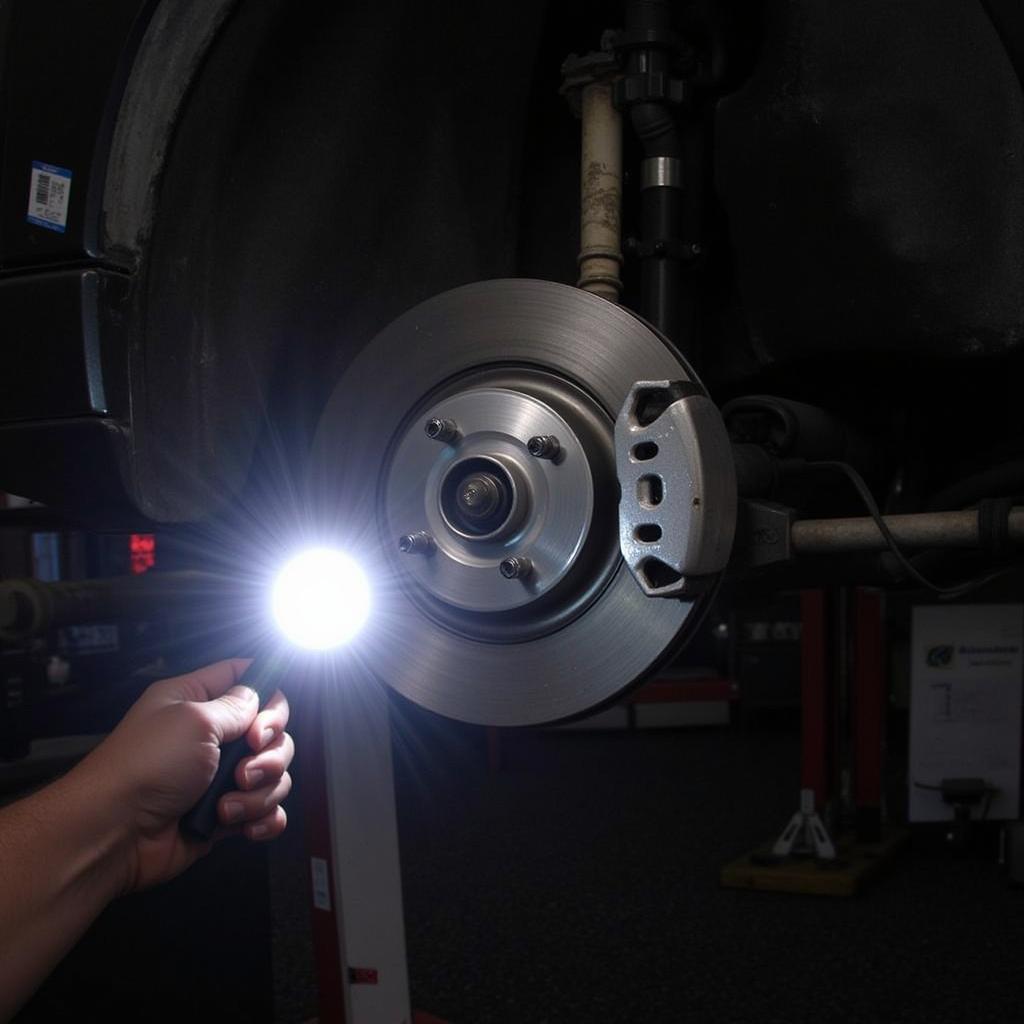 Mechanic inspecting brake fluid reservoir
Mechanic inspecting brake fluid reservoir
2. Worn Brake Pads
Worn brake pads are another common reason for the warning light to illuminate. As your brake pads wear down, they push the brake caliper pistons further out. This, in turn, requires more brake fluid to fill the lines, eventually leading to a low fluid level and triggering the warning light.
Troubleshooting: If your brake pads are significantly worn, they will need to be replaced. It’s recommended to have a professional mechanic assess the condition of your brake pads and replace them if necessary.
3. Brake Fluid Leak
A leak in your brake system can cause a rapid drop in brake fluid, triggering the warning light. Brake fluid leaks can occur in the master cylinder, brake lines, calipers, or wheel cylinders.
Troubleshooting: Look for signs of a brake fluid leak, such as wet spots on the ground near the wheels or under the vehicle. If you suspect a leak, it’s critical to have your braking system inspected by a mechanic immediately. Driving with a brake fluid leak is incredibly dangerous.
4. Faulty Brake Light Switch
While less common, a faulty brake light switch can also trigger the brake warning light. The brake light switch is responsible for activating your brake lights when you press the brake pedal. If the switch malfunctions, it can cause issues with the warning light system.
Troubleshooting: If you suspect a faulty brake light switch, consult a qualified mechanic for diagnosis and repair.
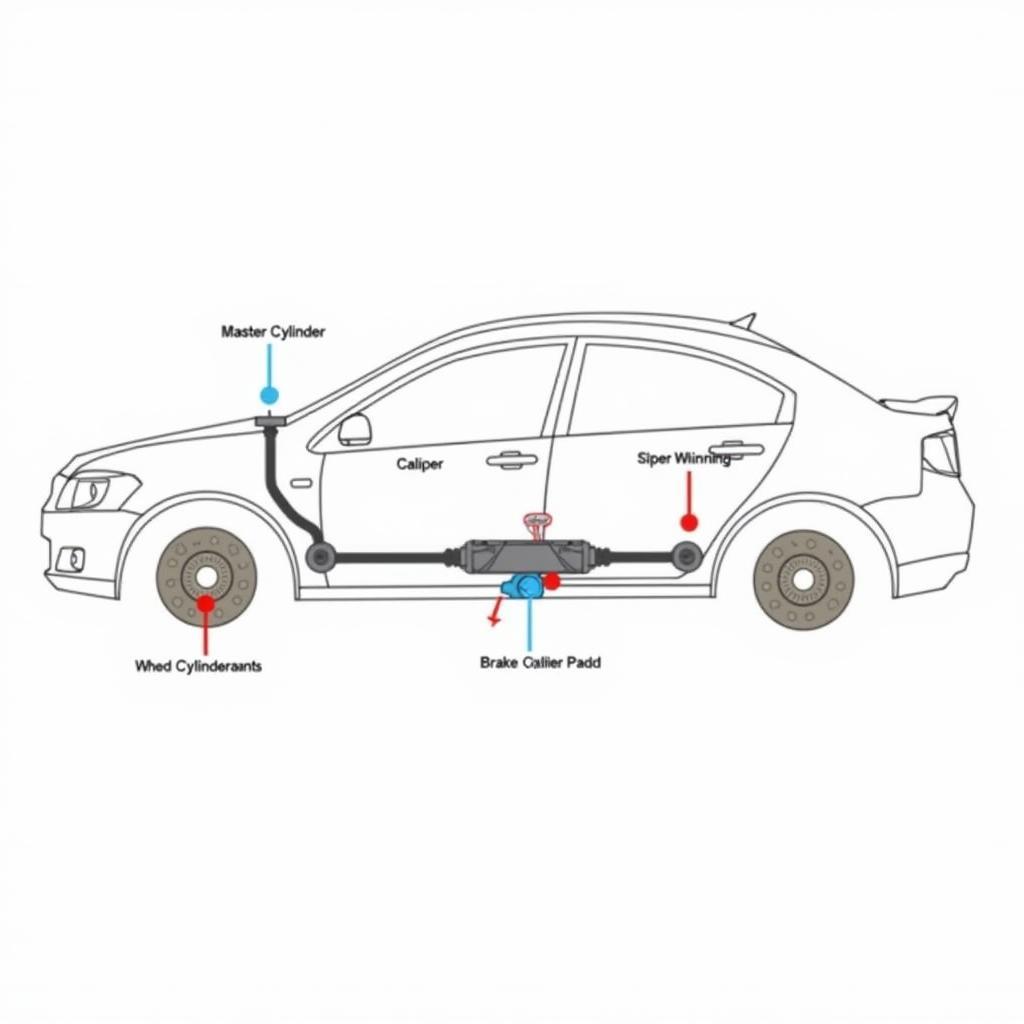 Diagram of car braking system
Diagram of car braking system
What to Do When Your Brake Warning Light Comes On
-
Don’t Panic: While a brake warning light is a serious issue, it’s important not to panic. Pull over to a safe location as soon as possible.
-
Check Your Parking Brake: Ensure your parking brake is fully disengaged. If the light turns off, you’ve solved the problem.
-
Inspect Brake Fluid Level: If the parking brake isn’t the issue, carefully check your brake fluid level. If it’s low, add the recommended type of brake fluid. However, be aware that this is a temporary solution.
-
Seek Professional Help: If the brake fluid level is extremely low, you see signs of a leak, or the light remains on even after adding fluid, do not attempt to drive your vehicle. Contact a qualified mechanic immediately to diagnose and repair the issue.
Conclusion
A glowing brake warning light in your 2005 Subaru Forester is a clear sign that your braking system requires attention. Ignoring this warning can have serious consequences, potentially leading to brake failure and accidents. By understanding the common causes, performing basic troubleshooting, and seeking professional help when necessary, you can ensure the safety and reliability of your Subaru Forester’s braking system.

